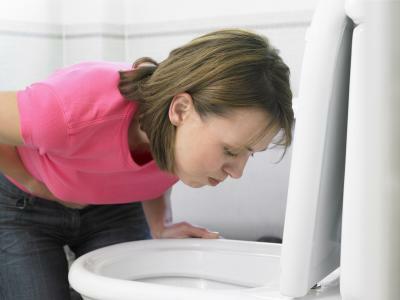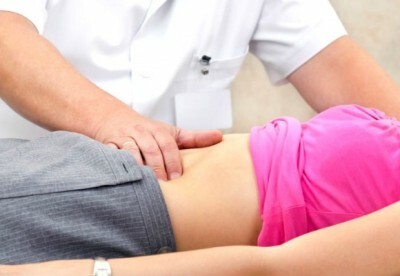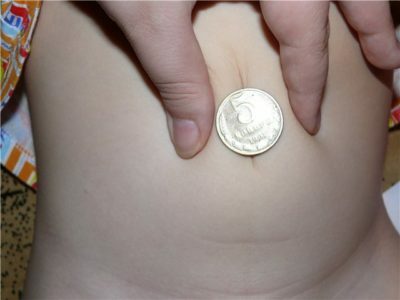1 What is a hernia?
The groin area is a connective tissue membrane that is layered, and between the layers is the inguinal canal, in which the nerve bundle, the artery and the ligament of the uterus of a circular shape are located. The channel has two holes: the inlet and the outlet. For various reasons, the resistance of the layers is reduced and the internal organs begin to press on them, going out through the natural openings of the channel. Thus there is a hernia.
Do you have gastritis?
GALINA SAVINA: "How easy is it to cure gastritis at home for 1 month. A proven method - write down a recipe. ..!"Read more & gt; & gt;
In the hernial sac, there may be any organ of the abdominal cavity, most often a small intestine or an omentum. Less often the hernial sac is formed due to the lowering of the uterus, tubes, ovaries, spleen, colon. There are cases when a hernia forms a gallbladder and stomach.
2 Why is protrusion formed?
Inguinal hernia in women is a pathological process that is not natural to the human body. So, pathology can cause causes predisposing and producing.

Recommended to consult
- Inguinal hernia operation in children
- How to cure inguinal hernia
- Symptoms of umbilical hernia in men
- Effective agent for gastritis and stomach ulcer
The following are predisposing causes:
- heredity;
- physical inactivity;
- weak ligament and muscle;
- weak constitution.
Producing factors include increased pressure inside the abdominal cavity and weak muscles of the anterior wall of the peritoneum. In turn, high pressure inside the peritoneum can be caused by the following reasons:
- a prolonged severe cough, which is usually a symptom of any disease;
- frequent cries and crying in childhood;
- problems with urination, which can be caused by diseases of the genitourinary system, leading to a narrowing of the urethra;
- heavy physical labor;
- prolonged vomiting;
- difficult childbirth.
Weak muscle of the anterior wall of the abdominal cavity can be caused by:
- overweight;
- peritoneal injury;
- surgery in the abdominal wall area;
- sedentary lifestyle;
- disease, weakening muscle corset and weight-reducing;
- second and subsequent delivery.
The probability of formation of a hernia is increased in two age periods. The first period is 1-2 years, the second period is more than 40 years. Hernia in children is caused by anatomical weakness or pathology of ligaments. In the elderly, the causes are the producing factors.
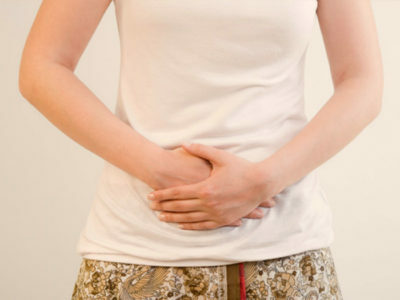
3 Symptoms of the disease
It is not always possible to identify this disease independently, as very often the symptoms are weak and the hernia is small.
Severe pain during menstruation can be a sign that a hernia of genital organs has formed.
-
 IMPORTANT TO KNOW! Gastritis? Ulcer? To have a stomach ulcer not turned into cancer, drink a glass. ..Read the article & gt; & gt;
IMPORTANT TO KNOW! Gastritis? Ulcer? To have a stomach ulcer not turned into cancer, drink a glass. ..Read the article & gt; & gt;
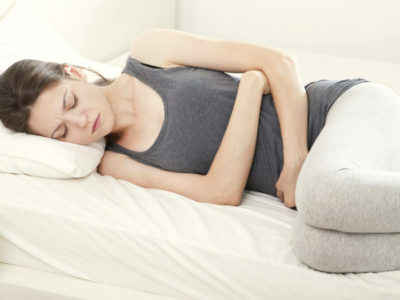
Inguinal hernia in women has such symptoms:
- formation in the groin, which has a tumor-like cavity;
- intensifying pain in coughing, sneezing, physical exertion;
- flatulence, constipation, diarrhea;
- pain in the lower abdomen, irradiating in the lower back and in the area of the sacrum.
Symptoms vary depending on the type of hernia, so these signs need to be considered in more detail.
- Reversible hernia can have both a sudden and a gradual onset. The pain is moderate, vomiting and fever are absent. The size of the hernia does not change, is within the hernial sac. To the touch, education can be both soft and hard. Intestinal obstruction absent.
- An unrecoverable hernia has a gradual onset. The pain is moderate, there is rarely vomiting, the temperature does not go up. To the touch the formation is soft, the size does not vary within the hernial sac. Intestinal obstruction absent.
- Fecal stagnation has a gradual onset. The pain is moderate, there is vomiting, sometimes there is a temperature increase. The size of education increases, to the touch strained. Partial obstruction of the intestine is noted.
- Inflammation has a sudden onset. A moderate pain is noted in the education area. Vomiting and high fever are noted. The size of the hernia increases, to the touch strained. There is a partial obstruction of the intestine.
- The infringement has a sudden beginning. There is severe pain, spreading throughout the abdomen, unceasing vomiting, fever. The touch is hard, it increases. There is complete intestinal obstruction.
-
 Gastroenterologist VAZHENOV: "I beg you, if you began to worry about abdominal pain, heartburn, nausea, do not in any way do gases. .."Read more & gt; & gt;
Gastroenterologist VAZHENOV: "I beg you, if you began to worry about abdominal pain, heartburn, nausea, do not in any way do gases. .."Read more & gt; & gt;
Another symptomatology of the disease depends on the stage of development of the hernia: beginning or formed.
Symptoms of a beginning hernia are often vague, manifesting as periodic discomfort.
Pain in the groin area is absent or minor, resulting from excessive physical exertion or prolonged standing. Outwardly, no voluminous formations are visible.
If there is a formed hernia, the symptomatology is already clearly pronounced. Painful sensations are becoming stronger, appear even in a state of rest.outwardly prominently protrusion in the inguinal fold, above the pubis, near the large labia.

The protrusion can be of different sizes: from slightly noticeable to very large. The size of the hernia does not affect the pain sensations and the likelihood of developing infringements.
Symptoms of inguinal hernia in women still depend on which organ went into the bag. For example, when the loops of the large intestine exit, chronic constipation appears, and with the exit of the uterus, fallopian tube or ovaries, pains in the lower abdomen are disturbing.
TIP FROM THE MAIN GASTROENTEROLOGIST
Korotov SV: "I can recommend only one remedy for the rapid treatment of Ulcer and Gastritis, which is now recommended by the Ministry of Health. .." Read testimonials & gt; & gt;
4 Types of hernial formations and complications
Inguinal hernia in women is classified by location and by degree of readability. Depending on the location of the localization,
- is distinguished by a direct hernia: the bag leaves the inner inguinal cavity;
- oblique hernia: the bag exits through the outer inguinal cavity;
- underbubble outer: the bag comes out over the tuberculosis fossa.
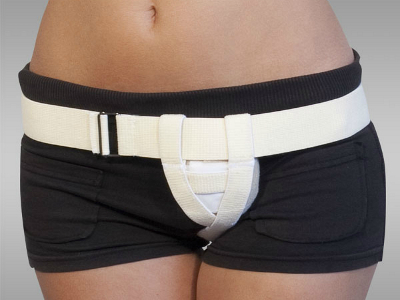
By the degree of vpravljaemosti exist:
- Replaceable. Such formations can easily be adjusted independently, taking, for example, a horizontal position.
- Unrecoverable. Such formations are not introduced back, they are always bulging, and this is not affected by the position of the body. Inconsistency is due to the formation of adhesions. This form disrupts digestion, causes vomiting.
Any form of protrusion can cause complications, which are very dangerous. Inflammation in the sac is rare, but has a very negative effect on health. Within the hernia may develop appendicitis, inflammation of the genitals, colitis. An increase in the severity of inflammation leads to a high fever. Inflammation leads to the formation of adhesions, which makes education irreparable. In case of acute inflammation, an emergency operation may be required. The main symptoms of inflammation are nausea, vomiting, high body temperature, severe pain.
The next complication is fecal occlusion, formed when entering the bag of the colon, causing intestinal obstruction. The digestive process is disrupted, resulting in prolonged inactivity, blood supply is disrupted, and gut death may occur. Most often, such a problem is faced by older people with excess weight. It is possible to temporarily relieve the condition with massages and laxatives. But in order to fully resolve the problem, surgical intervention will be required.
Infringement of a hernia is one of the most dangerous complications, arises unexpectedly. The contents of the bag are squeezed in the area of the outflow hole. Blood circulation is violated and nerve fibers are pinched. According to statistics, this complication can occur in 15% of patients. The infringement can be determined on the following grounds:
- it is impossible to correct the education that was previously set;
- bag becomes denser and tighter;
- sometimes increases body temperature;
- observed vomiting and nausea;
- severe pain in the groin area, extending to the entire peritoneum.

5 Treatment methods
The only effective way to remove a hernia is surgery. Of course, there are many recommendations that promise to get rid of hernia, such methods include physical exercises, physiotherapy, bandages, compresses, but they will not get rid of the problem.
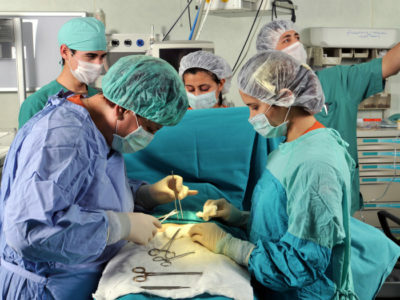
In addition, you can not hesitate, because at any time a complication can develop.therefore at the first suspicions it is necessary to address to the doctor who will appoint or nominate treatment. The aim of the operation is to eliminate protrusion and prevent relapses. There are several methods of eliminating protrusion, the application of which is determined by the doctor on the basis of an individual case:
- hernioplasty is non-stretch;
- stretching hernioplasty;
- is an abdominal endovidoscopic hernioplasty.
Hernioplasty non-tight is to strengthen the wall of the inguinal canal, for this, synthetic materials are used. The operation of Liechtenstein is widespread, which is carried out as follows: a prosthesis in the form of a mesh is sewn to the tendon plate. The muscle is damaged and the tension is not created. In this regard, the probability of relapse is reduced to a minimum. The material from which the mesh is made, is not allergic, does not dissolve in the body, does not provoke the spread of infection. The abdominal wall is suspended by both laparoscopic method and open access. Laparoscopy minimizes the cosmetic defect, but still most of the surgeons prefer the open access technique, as it is safer and more effective.
Tension gerioplasty is the most simple, inexpensive and time-tested operation. The essence of it is that the tissues are tightened and sutured in the area of the exit of the hernia. This method is rarely used, since there is a high probability of recurrence and scar formation.
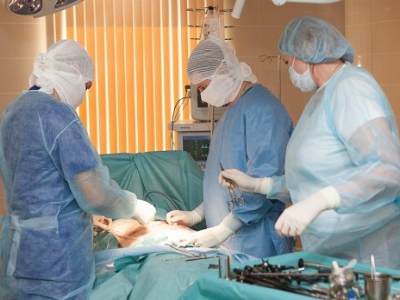
Extra-abdominal endovidoscopic hernioplasty is a kind of non-delayed surgery. Difference of this operation is the installation of a prosthesis over the abdominal cavity, that is, all processes are carried out outside the cavity, the prosthesis is placed directly under the skin. Such a technique prevents the occurrence of adhesions in the future, but is very difficult.
6 Rehabilitation and recovery
After the operation for some time, the woman will be disabled. The length of rehabilitation depends on the method of operation. When performing an open procedure, the time increases in contrast to the laparoscopic method. At a high pain threshold, the patient is prescribed an anesthetic.

The recovery process after surgery is mandatory to avoid relapse. Sometimes it is recommended to wear a bandage to accelerate the healing process and avoid the discrepancy of postoperative sutures.
Recovery consists of three periods:
- outpatient, which is 10 days after the operation;
- restorative, which begins with 2-3 weeks after surgery;
- the final stage is 1-6 months, the duration depends on the complications.
During the outpatient period, it is necessary to exclude exercise as much as possible, bed rest and a sparing diet are recommended. In the recovery period, you need to gradually increase physical activity without actively engaging the abdominal muscles. Wearing a bandage is recommended at this time.
The completion of the restoration is to create a strong muscular corset. For this you need to perform special exercises.
- "Scissors".Lying on your back, you need to lift your legs in relation to the body by 45º, slightly spreading to the sides, and then crossing. At the initial stage, you need to do 5-7 repetitions, gradually increasing to 15-20.
- Rotation with the feet in the supine position( or "bicycle").During the first week, the exercise is performed for 1-3 minutes, gradually increasing the time to 5-7 minutes.
7 Conclusion
It is always easier to prevent the disease than to treat it later. Therefore, you need to minimize excessive physical exertion, lead a correct lifestyle, maintain muscle in tone.
- 1 What is a hernia?
- 2 Why does protrusion form?
- 3 Symptoms of the disease
- 4 Types of hernial formations and complications
- 5 Treatment methods
- 6 Rehabilitation and recovery
- 7 Conclusion
The inguinal space is a very vulnerable place for protruding hernias. Inguinal hernia in women, the symptoms of which can be diverse, is a dangerous disease.

